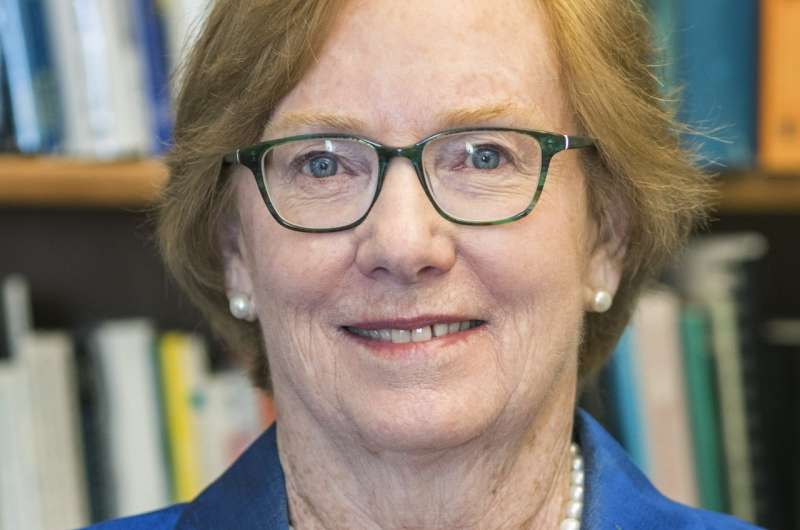Linda Aiken, PhD, RN, the Claire M. Fagin Leadership Professor in Nursing, Director of the Center for Health Outcomes and Policy Research, and Senior Fellow at the Leonard Davis Institute for Health Economics at Penn Credit: UPenn
Two decades ago, a landmark study by the National Academy of Medicine (NAM) highlighted the prevalence of medical errors and called for a national commitment to reduce patient harm. Despite substantial investment by government and private institutions to increase patient safety, progress has been slow and uneven. A new study, published today in the November issue of the journal Health Affairs, sheds light on what more can be done.
Researchers from the Center for Health Outcomes and Policy Research (CHOPR) of the University of Pennsylvania School of Nursing (Penn Nursing) investigate whether hospitals have implemented a key NAM recommendation—to improve nurse work environments and assure adequate nurse staffing—and whether these changes corresponded to improved patient safety, as reported by patients and nurses.
Between 2005 and 2016, only 21 percent of hospitals substantially improved their clinical work environments; 71 percent made no improvements and 7 percent experienced deteriorating work environments. Hospitals that improved their work environments saw their patient safety indicators improve as well, with favorable nurse and patient appraisals of patient safety increasing by 11-15%. Grades on patient safety remained the same for hospitals in which work environments remained the same, and favorable grades on patient safety fell by 19% in hospitals with worsening care environments.
"A key recommendation of the National Academy of Medicine in 1999 for improving patient safety was to transform nurse work environments in hospitals to ensure adequate nurse staffing and clinical work environments that freed nurses to spend their time in direct patient care," said lead author Linda Aiken, Ph.D., RN, the Claire M. Fagin Leadership Professor in Nursing, Director of the Center for Health Outcomes and Policy Research, and Senior Fellow at the Leonard Davis Institute for Health Economics at Penn. "Our recent study of nurses and patients suggests that those recommendations have not been uniformly adopted by hospitals, which may be hampering progress toward improving patient safety and preventing patient harm."
The study included 535 hospitals in four large states in two time periods, 2005 and 2016, and reports from 53,644 RNs and 805,881 patients who practiced or received care at these hospitals. Nearly 30 percent of hospital nurses in 2015-16 gave their hospitals unfavorable grades on patient safety, and 55 percent would not definitely recommend their hospital to a family member or friend who needed care.
Patients also expressed concern about quality and safety with 30 percent reporting that they would not definitely recommend their hospital. Nearly 40 percent of patients said that they did not always receive help quickly from hospital staff, and nearly 40% reported that medications were not always explained before given.
"Patients' and nurses' appraisals show patient safety in hospitals remains a concern almost 20 years after the NAM originally called for national action to reduce patient harm," said Aiken. "Our findings show that clinicians continue to face challenging but modifiable work environments that interfere with their ability to implement safety interventions consistently. Improving work environments through organization and culture change is a comparatively low-cost intervention to improve quality of care and patient safety."
The study found that:
- Over 80 percent of nurses rated the clinical work environments in their hospitals less than excellent.
- Close to 30 percent of nurses gave their hospital an unfavorable grade on infection prevention.
- Over 30 percent of hospital nurses score in the high burnout range on standardized tests.
- Thirty-nine percent of patients reported that medications were not always explained before given.
- Only 21 percent of hospitals significantly improved their clinical work environments over the past decade; most made no improvements and 7 percent experienced deteriorating work environments.
- Hospitals that significantly improved their care environments experienced much greater improvements in patient safety indicators and implementing a culture of patient safety than hospitals that did not improve clinical care environments as recommended by the National Academy of Medicine.
- Hospitals in which the work environment worsened exhibited a 25 percent decrease in the percentage of nurses saying that patient safety is a top priority of management.
Journal information: Health Affairs
Provided by University of Pennsylvania School of Nursing




















